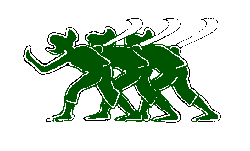 World Sugar History Newsletter
World Sugar History Newsletter World Sugar History Newsletter
World Sugar History NewsletterIn this issue:
Elizabeth Abbot, Sugar: A Bittersweet History (Toronto: Penguin Canada, 2008). Pp. x + 453. $24.00 paperback. ISBN 978-0-14-301713-4. (Review in future issue.)
Peter Griggs, "Deforestation and sugar cane growing in Eastern Australia, 1860-1995," Environmental History, 13:3 (2007), pp. 255-283.
B. W. Higman, Plantation Jamaica, 1750-1850. Capital and Control in a Colonial Economy (Mona, Jamaica: University of the West Indies Press, 2008). $37.50 Paperback. ISBN 978-976-640-209-9.
Russel R. Menard, "Plantation empire: How sugar and tobacco planters built their industries and raised an empire,” Agricultural History, 81:3 (2007), pp. 309-332.
Jorge F. Pérez-López & José Alvarez, Reinventing the Cuban Agroindustry (Lanham, MD.: Lexington Books, 2005). Pp. 323. $27.00 paperback. ISBN 0-7391-1000-4.Kelvin Santiago-Valles, "'Our race today [is] the Only hope for the world': An African Spaniard as chieftain of the struggle against 'sugar slavery' in Puerto Rico, 1926-1934," Caribbean Studies, 35:1 (January-June 2007), pp. 107-140.
Tamás Szmrecsányi, ed., Papers presented to a special session on the history of the sugar industry at the 20th International Congress of Historical Sciences, Sydney, Australia, 3-9 July, in Illes i Imperis: Estudis d’histňria de las societas en el món colonial i postcolonial, 9 (2006), pp. 5-130. The journal is published by the Facultat d’Humanitats, Universitat Pompeu Fabra, Barcelona. There are papers by Tamás Szmrecsányi, Pedro Ramos and and Araken Alves de Lima, Richard A. Hawkins, Daniel Campi and Patricia Juárez-Dappe, and David Lincoln.
Deborah Warner, "How sweet it is: Sugar, science and the state," Annals of Science 64 (April 2007), pp. 147-170. Note: This paper "concerns the introduction of the polariscope (or saccharimeter) for customs purposes in the United States."
David Lincoln has sent us a copy of a lengthy report that appeared in the June 4, 2007, edition of L’Express, of Port Louis, Mauritius, about three Mauritian scientists who devoted much of their careers to research in the Mauritius Sugar Industry Research Institute and the Sugar Cane Research Station of the Department of Agriculture. The article is available electronically from www.lexpress.mu
The Centre for Research on Latin America and the Caribbean (CERLAC) library at the Keele Campus of York University contains several shelves of material relating to the sugar industry. This material was received from the International Commission for Coordination of Solidarity Among Sugar Workers (ICCSASW), which was based in Toronto from 1983 to 1998, though some of the material dates back to the early 1970s. Sugar is considered in its social, economic, and political, rather than nutritional, aspects.
This material is mainly the result of research and educational activities undertaken on behalf of sugar workers’ unions in Latin American and the Caribbean, as well as elsewhere. It includes the newsletters Sugar World and Mundo Azucarero, published regularly (monthly or bimonthly) from 1977 to 1998, containing information and analysis for sugar workers. They cover labor struggles, repression of unions, and wage settlements, in addition to other industry news.
There are also several research reports on topics such as cooperatives, migrant labor, multinationals, and corn sweeteners. The collection contains background documentation used in producing these newsletters and reports. Some of the material is also in Portuguese and French, although the main languages are English and Spanish. ICCSASW organized four international conferences and about 20 seminars for sugar workers in various parts of the world, and the collection contains documentation and reports from these events.
Researchers wishing to use these materials can receive orientation from Reg McQuaid (regmcquaid@sympatico.ca,or 416-657-8345), who used to work with ICCSASW.
Professor Karim Tiro of Xavier University writes:
I am soliciting suggestions for materials to include in an exhibition on the history of cane sugar in North America to the early 20th century. I am particularly interested in visual representations, three-dimensional artifacts or replicas, scale models, and brief primary source documents. Please contact Prof. Karim M. Tiro, Department of History, Xavier University, at tiro@xavier.edu.
Karim M. Tiro, PhD
Associate Professor
Department of History
Xavier University
3800 Victory Parkway
Cincinnati, OH 45207-4444
513-745-2039
fax: 513-745-3215
The World Sugar History Newsletter is compiled by Jock Galloway and Peter Blanchard. Correspondence should be sent to Peter Blanchard, Victoria College, University of Toronto, 73 Queen’s Park Crescent, Toronto, Ontario, Canada M5S 1K7, or by e-mail to: galloway@geog.utoronto.ca or blanchar@chass.utoronto.ca.